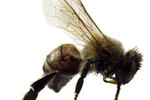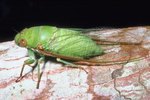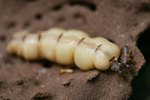At some point in your life, you have probably come across hornets. Even though they are peaceful creatures, they are stinging insects that can make your skin swell to large welts and even cause a hospital stay for those who are unfortunate to disturb a colony. You may refer to a hornet as a wasp. They are paper wasps who build paper nests.
Identification
Hornets are large stinging wasps that belong to the family Vespidae, and are closely related to the yellow jacket. They range in length from 3/4 inches to over 1-inch long. Their bodies are long and slender with long legs. They build their paper nests under eaves, in attics, and under tree branches. They are social insects and live in colonies that consist of workers, queens and males. The early cycle of the colony consists of only a queen and the workers.
Function
The queen dominates the colony and is the only female that reproduces. The workers are asexual and mostly female. Their job is to build the hive, gather the food, and protect the colony. The males are few in number compared to the females. Their job is to mate with the young queens. Soon after mating, they die.
Time Frame
The queen mates in autumn and survives the winter by crawling under the barks of trees, rotten wood, or soil. She emerges in spring and looks for a nesting place. She deposits her eggs that develop into small larva after five to eight days. Over the next twelve to fourteen days, the larva goes through five stages. When grown, the larva creates a silk thread to cover the cell they are in. After thirteen to fifteen days, the young hornet bites its way out. After five or ten workers emerge, the queen will stop hunting for food and the new workers will take over.
Effects
After three to four weeks, the workers die, and new workers continue to emerge. The queen settles into the nest to lay eggs that become young queens and males. The workers feed the young queens and males, ignoring the queen who leaves the nest and dies. The new males emerge in the fall and swarm around to mate with new young queens that have emerged. Soon after the mating, the males die. The last workers die in early fall. The young queens look for a place to spend the winter and the cycle begins again.
Warning
Hornets will not bother humans unless they are provoked. The workers will defend the nests, so avoid getting close to areas where there are nests. If the hornets are provoked, avoid rapid arm movements and try to stay out of their flight path. Some people are allergic to their stings and must receive immediate attention.
Photo Credits
-
ClickArt by Broderbund
Writer Bio
Pauline Gill is a retired teacher with more than 25 years of experience teaching English to high school students. She holds a bachelor's degree in language arts and a Master of Education degree. Gill is also an award-winning fiction author.





